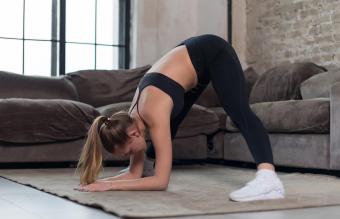
In theory, learning pranayama techniques isn't difficult. However, acquiring the discipline which makes the practice effective takes patience and regular attention.
What is Pranayama
Pranayama is a combination of control and energy. In Sanskrit, the word prana means life force. Yogis believe air is the life force. The greater our ability to control that energy, or breath, the stronger we become in mind, body, and spirit.
The practice of pranayama helps us to understand ourselves and the interconnectedness of our system. In yoga class, the instructor reminds us to breathe into the pose. This is because through breath, we extend beyond our limitations. In meditation, controlled breath is used to calm the mind and center the body. Deep, rhythmic breathing provides an outlet for releasing tension. Forcing more oxygen into the bloodstream revitalizes the body.
Brain studies reveal that people who practice pranayama techniques regularly experience heightened mental clarity. The study group performed better at problem-solving skills than those who didn't practice pranayama as often.
A Simple Breathing Exercise
If you've never tried a breathing exercise before, here's an introduction.
- Sit up straight, pressing the small of your back against chair.
- Draw your shoulders down from the ears, letting the shoulder blades sink into the back.
- Breathe in through your nose for a count of three. Make sure to expand the belly as you breathe in.
- Now, exhale with control, pushing air from the belly up through the throat and out your nose. Make your exhale last for a count of six. Each count should result in a pulse of air until the bellybutton is pulled in toward the spine on the final exhale.
- Rest for a moment, then repeat twice.
You may have felt like you could have increased your inhale breath. If so, bump up the inhale count to five, and the exhale count to 10. Do this exercise when you first wake up, in the middle of the day, and again before bed.
Practice this daily for a week, and work up to the same count for inhales and exhales. You'll probably notice that you can cycle more air each session. You're now ready to practice pranayama techniques.
Pranayama Techniques to Try
There are three primary pranayama breathing techniques: Dirgha Pranayama, Nadi Shodhana, and Ujjayi Pranayama. The instructions below will be for sitting positions, but you can also practice pranayama while in Corpse Pose.
Dirgha Pranayama
Also known as three-part breathing or the complete breath, Dirgha Pranayama utilizes the diaphragm and all three chambers of the lungs.
- Sit in Lotus Pose or Siddha Asana. Sit tall with a straight spine.
- Close your eyes , place your hands on your belly, and inhale through your nose, lifting the chest. Fill the diaphragm (belly) with air and expand the rib cage. Exhale through your nose, slow and controlled.
- Move your hands to your heart and repeat the breathing sequence. Your chest should rise as your rib cage expands. Exhale.
- Place a hand at the base of your throat, fingers around one side of your neck, thumb on the other. Inhale. Your upper body should fill with breath. Exhale.
- Keep your breathing slow and controlled by counting to 10 for both inhale and exhale breaths.
Nadi Shodhana
Sometimes referred to as channel cleansing or the sweet breath, this pranayama technique has you alternate breathing between nostrils.
- Sit up straight and tall. Lift your right hand to your nose, and fold in the index and middle fingers against your palm.
- Place your right thumb against your right nostril and your ring and pinkie fingers against your left nostril.
- Close the right nostril with your thumb and inhale slowly through the left nostril.
- Close the left nostril with your ring and pinkie fingers as you release the right nostril to exhale. Make the exhale slow and controlled.
- Now repeat on the other side: inhale through the right nostril, exhale through the left.
- Do this pranayama exercise for five to 10 cycles, taking care to alternate between nostrils.
Ujjayi Pranayama
This pranayama technique is also referred to as the ocean or whisper breath. You'll breathe out through your mouth for this one.
- Position yourself in a sitting asana. Close your eyes.
- Breathe in deeply through the mouth. Expand your belly as your torso fills with breath.
- On the exhale, keep the spine straight as you breath out through the mouth, making a "haaaaaaaaauuuhhhhhh" sound.
- Inhale through the nose for the rest of this routine, but exhale with air passing over the vocal cords to create this soft sound.
- Keep your breathing slow and controlled again, counting if necessary to regulate the inhale and exhale.
With all pranayama techniques, practice as long as you feel comfortable. For some people that may be a minute or two, while others may follow a routine for up to 10 minutes.
If you feel lightheaded at any time, stop the exercise and breathe normally until you're ready to start again. If you repeatedly feel dizzy, it's possible you're not taking deep, slow breaths, so pay close attention to form.







